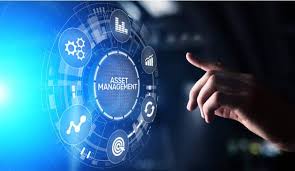Qmatic offers a wide range of queue management system options, from straightforward ticketing, self-check-in kiosks, documentation, and display solutions to a completely customized customer journey platform that makes use of customer data. The importance of a queue management system (QMS), however, is that it enhances the visitors’ (or patients’) queueing experience from check-in through service and then takes their input. Depending on the needs of the client, the queue management system app could be entirely digital, physically present, or a combination. In order to produce insightful analytics and enhance operations, QMS also gathers, evaluates, and manages visitor queuing data. This article will give a clear understanding of what a queue management system is all about.
Queue Management System
A queue management system is a collection of tools and supporting subsystems that improve the customer experience across a range of industries, including banking, healthcare, retail, education, government, and telecom.
Advantages of Queue Management Systems
The queue management system has long been established. Customers collect a ticket when they enter a bank, post office, telecom store, etc., and move to the service counter when called; there is no longer a physical lineup. The majority of queue management systems nowadays are ticket-based. With this improved service system, people no longer wait in lines. In some sectors and nations, queue management systems have a 100% penetration rate; they are a requirement for these sites.
How Does the Queue Management System Work?
A queue management system (QMS) can work in either or both two ways:
1. Real-Time Queue Monitoring
The fundamental idea behind the queue management system (QMS) is to estimate the current demand for the queue and notify your workers in real-time. The number of customers being serviced, the number of customers waiting to be served, and the length of time they have been waiting are all counted by people counting sensors installed above each checkout.
When paired with sophisticated algorithms and real-time store footfall data, this can be utilized to calculate forecast queue volume and issue alerts at specified levels. This makes it feasible for you to respond to client demand as quickly as possible, keeping the checkout lines moving smoothly, cutting down on customer wait times, and enhancing their shopping experience.
Advantages:
- Boost Consumer Spending
Customers are more likely to frequent the store and buy more things overall if a better shopping environment is created where they don’t have to wait in huge lines at the end of their visit.
- Efficient Use of Personnel
Check to see how many employees are actually needed to run the checkouts at any particular time. Utilize your personnel to their fullest potential by shifting them to various areas of the store when business is slow.
- Boost Client Retention
By enhancing the shopping experience for customers and their pleasure with your establishment, you can encourage client loyalty and boost spending.
2. Predictive Queue Management
Predicting future staffing needs for checkout lanes and queue volume represents the next degree of complexity. We can forecast the length of the queue up to 15, or even 30 minutes in advance by employing sensors at the store’s entrances and advanced prediction algorithms.
Your in-store management will receive the most comprehensive information about how to effectively organize staffing and how to provide the greatest experience at the shop when you combine this with the advantages provided by real-time information. You may ensure that there are employees ready to handle consumer demand before the store gets too crowded by predicting your needs in advance. Customers can wait less time if proactive action is taken rather than reactive action.
What Are the Types of Queuing Systems?
The following are the various types of queuing systems
#1. Structured Queues
People form predictable lines at supermarket checkouts, banks, and airport security. Structured queues are referred to in facility management as “Queue Managers,” “Crowd Controllers,” or “Public Guidance Systems.”
However, most queue management system (QMS) is configured to manage ticket ranking for a service (with or without a numbered ticket) with identification, allowing for a calm and stress-free waiting experience. Additional alternatives include planned reception by appointment and remote rank allocation through SMS. Adding a human employee to deliver the system, keeping track of organized queue lengths to direct customers, or speeding up service are manual components of structured queue management (e.g., fetching more cashiers). In UK supermarkets, a customer service manager, or “host,” may be installed.
#2. Unstructured Queues
When a line of individuals forms at random, in different locations and directions. This is frequently the case in some retail settings, in taxi lines, at ATMs, and in a variety of other places at times of strong demand. As individuals approach the busiest locations, physical barriers and guides direct them into a queue.
#3. Mobile, Virtual, and Online Queue
By allowing clients to utilize their mobile devices to obtain real-time wait information and choose a justification for visiting your service fact, customers don’t have to wait around for too long and are free to continue with their day. While waiting for their turn, customers are free to wait elsewhere. They can receive emails, SMS, or app notifications alerting them to their turn, and when they are ready to be seen, they are called forward for service. Mobile queues, particularly those that are online, can also incorporate real-time queue data statistics and user feedback. One example of a queuing system that can offer real-time data on the line and an estimation of how long it will take to clear it is Qiwii. id.
In order to enter a mobile line, the consumer must first install an app on their phone. The installation period may increase the initial wait time for the person. Customers may end up with hundreds of apps on their devices due to the availability of numerous queuing apps and the fact that not all businesses utilize the same app. A better choice from the perspective of the user would be the one-stop app for various businesses and institutions. The only clients who will benefit from a mobile queue app for a particular company or institution are those who frequently go to the same location.
Queue Management System Qms
According to our updated definition of queue management (above), a queue management system(QMS) is also a system that controls the customer’s waiting experience from pre-service to post-service. A queue management system’s primary function is to ensure that clients are serviced in the proper sequence. Software and hardware components that assist organizations in streamlining customer access to services, organizing and managing client flow and employees, and gathering information to enhance the customer experience can be found in the solution.
Queue Management System (QMS)Types
As was already mentioned, a queue management system documentation and app may include both hardware and software. Examples of such works are shown below. While some of them can be utilized on their own, the more advanced solutions combine the many components to create an integrated omnichannel solution.
Software examples for a queue management system include:
- scheduling appointments online
- smartphone virtual queueing
- Apps for staff to show up and serve clients
- staff and customer notifications
- Operation monitoring in real time
- customer satisfaction polls
- extensive analysis and statistics
Hardware examples for a queue management system include:
- Self-service kiosk
- printers for tickets
- Digital billboards
- Display
- Playback Device
- Sound and vision
Why Is Queue Management Important?
Customers benefit from relaxation and a better overall experience thanks to a virtual queue management system. However, that is only a portion of what may be done; the best queuing systems can also provide a number of advantages. Here are nine benefits of a virtual queue for businesses and their clients.
#1. Enhanced Personnel Efficiency
Employees may need to take charge of a long line, doing everything from determining who will be in it next to soothing angry customers to interrupting their work to say, “I’m helping this customer now; the line starts back there.” Additionally, clients who are impatient from a long wait could be less attentive and more irritable when it is eventually their turn.
A queue system eliminates time-wasting diversions from client management, allowing more guests to book and freeing up resources for other activities. Customers who are happier also tend to be less stressed out, which allows employees to work more effectively.
#2. Enhanced Customer Service
Employees are better equipped to serve a single customer when they can concentrate on that customer alone without worrying about the long queue of individuals behind them. Because there is less need to move on to the next customer, they don’t feel the need to speed the interaction and are more willing to go above and beyond.
While a consumer waits, a queue management system can gather data about the customer and their requirements. The staff has access to the information right away, allowing them to cater services or assign specialists to any consumer who jumps ahead in the virtual line.
#3. Higher Overall Sales
A conventional stand-in line queue in retail makes people wait for a long time and messes up the customer’s trip. Customers may decide to buy their one item, join the line, wait in it, and then leave—if they want to stay at all—when they see a big queue. Even while queues can be made to promote impulsive purchases, the customer is still being barred from the remaining portions of the store.
Virtual queues boost consumer flow by allowing shoppers to browse the store while they wait. People are not restricted to one location, which raises the possibility of more sales. A queue management system allows spontaneous purchasing beyond a few close goods.
#4. Shorter Waiting Times
A virtual queue reduces customer wait times by boosting employee productivity and speeding up interactions. Additionally, since customers are not restricted to a physical line and are free to roam within or outside the store, they perceive their wait time as being shorter. In other words, a 20-minute wait may now just be 15 minutes, even if it may feel like 10.
#5. Greater Employee Satisfaction
A queue management solution can facilitate interactions between customers who are happy and less worried, which is what most staff desire. Additionally, virtual queues help personnel become more knowledgeable and helpful when aiding clients.
Employees may feel more connected to and satisfied with their work as a result of either of these results. This is important since studies have shown that organizations with engaged employees are 21 percent more lucrative and that they are also more productive, more highly valued by consumers, and less likely to quit.
#6. Enhanced Client Loyalty
Customers value excellent customer service as well as small details that improve their purchasing and daily lives. Even if a queue management system only gives consumers a few minutes’ worths of time back or avoids making them stand in line or squeeze into a packed waiting area—especially during a pandemic—it still demonstrates that you care and enhances the overall customer experience.
However, according to HubSpot research, repeat consumers are 90% more likely to make extra purchases when they are loyal customers. Virtual queues give priority to customers, who can elect to give you priority in return.
What Is the Application of Queue?
When processing must be done in the First In First Out sequence rather than instantly, a queue is employed.
Useful Queue Applications:
- When numerous users share the same resource. CPU scheduling and disk scheduling are two examples.
- When information is exchanged between processes asynchronously (information is not always received at the same pace as it is sent). Examples include pipelines and IO Buffers.
Queue applications in operating systems:
- Semaphores
- First come, first served (FCFS) scheduling, as in a FIFO queue
- printing spooling
- buffer for gadgets such as a keyboard
Network applications for queue:
- Router and switch queues
- Mail lines
- Variations: ( Deque, Priority Queue, Doubly Ended Priority Queue )
Various further uses for the queue
- They serve as waiting lists for a common cohesive item, such as a printer, disk, or central processing unit.
- Mobile CD players and MP3 players rely on them as buffers.
- Applied to playing from the front or adding a song at the end.
Queue management system Documentation
The documentation for an automated queue management system is a tool for facilitating effective customer service. The system can be helpful to the service provider’s manager in that it can facilitate the management of client flow.
Furthermore, the goal of this project is to build out the documentation for an automated queue management system that can monitor waiting times and prioritize which customers are serviced first. Research in this documentation centers on the queueing management systems of banks; the various queuing algorithm approaches used by banks to serve customers, and the typical wait time. This queuing architecture model can switch between two queue control strategies according to the average waiting time.
Importance of Queue Management System
There are three reasons why queuing systems are important, they are:
- Poor queuing systems can result in crowding and, in light of COVID-19, unneeded client contact from a safety standpoint.
- Poor queuing systems can reduce staff productivity from an operational standpoint since they make them spend more time trying to organize the queue.
- If customers leave from using the line, the company loses money.
A consumer may not think about returning to a business that has inadequate, poorly managed lines in some cases. By implementing effective queue management systems, one may automate the queuing process while also enhancing service, safety, and customer loyalty.
In many customer-facing settings, such as shops, post offices, and train stations, people think that once they are in line, the sale is already done. In a strict sense, this is untrue. A “walkaway” is someone who leaves the line before finishing their transaction or taking care of the reason for their visit. The exact cost of walkaways to a firm is difficult to calculate, but implementing effective queuing procedures can lessen the likelihood that individuals would skip the line.
What Are the Limitations of Queue?
- Time-consuming operations include the insertion and deletion of components from the middle.
- Limited Room
- A new element can only be put into a conventional queue after the removal of older elements.
- An element search takes O(N) time.
- Prior specification of the queue’s maximum capacity is necessary..
What Is the Advantage of Queue?
- It is simple and efficient to manage a lot of data.
- Because it adheres to the first in, first out principle, operations like insertion and deletion may be carried out with simplicity.
- When many people are utilizing a single service, queues are helpful.
- When communicating data across processes, queues communicate quickly.
Queue Management System App
See our list of available free queue management system app. All the products included in this list have a free trial version available. There are restrictions, usually in the form of time or features, as with most free versions.
#1. Waitwhile
A virtual waiting app and a queue management system platform that can be tailored to fit any business is called Waitwhile. Customers can virtually queue up with their phones and receive a text message when their turn has come. Companies like Best Buy, Louis Vuitton, Lululemon, and many others have benefited from our assistance in eliminating queue waiting. Businesses have saved 100 million customers—and counting—more than 10,000 years of line-waiting time thanks to Wait while!
#2. Qminder
Qminder is a cloud-based software for managing queues that aid businesses in providing memorable waiting times. Customers can use Qminder to remotely queue up using their phones and receive notifications via text messages. You can deliver more individualized service thanks to the information collected during customer self-check-in. Across numerous industries and around the world, we are providing assistance in serving millions of clients. Uber, the World Bank, AT&T, Sprint, Verizon, the Olympics, and even Uber have benefited from our knowledge.
#3. G2 Deals
How G2 Deals can benefit you is as follows:
- Simple software shopping for carefully chosen products.
- Own the process of purchasing software.
- Find exclusive discounts on software.
Conclusion
A queue management system is not designed to do away with waiting entirely. Having too many workers on hand to achieve a sense of immediate service is quite costly. In contrast, the focus of a queue management system is on optimizing the waiting time for consumers.
Queue Management System FAQs
What is the purpose of a queue management system?
With the use of a Queue Management System(QMS), businesses may divide their consumers into distinct lines.
What are the components of a queuing system?
A queuing system consists of three main parts, which are as follows: To-Do List Upon Arrival Mechanical means of service Discipline in the queue.
Why is a line called a queue?
Queue is Latin for tail, cauda. Outside the US, it denotes a line of people or cars waiting their turn. If your English buddy talks about queuing for the movies, that means buying a ticket.
Similar Posts
- VIRTUAL ASSISTANT SERVICES: Best Virtual Assistance Services
- INCOME BASED APARTMENTS: Everything You Need To Know
- Virtual Teams: Types, Benefits, Challenges & Management
- LOW-INCOME HOUSING: Affordable Housing Options In 2023
- BUILDING MANAGEMENT SYSTEMS: Top BMS Software and Companies In 2023






